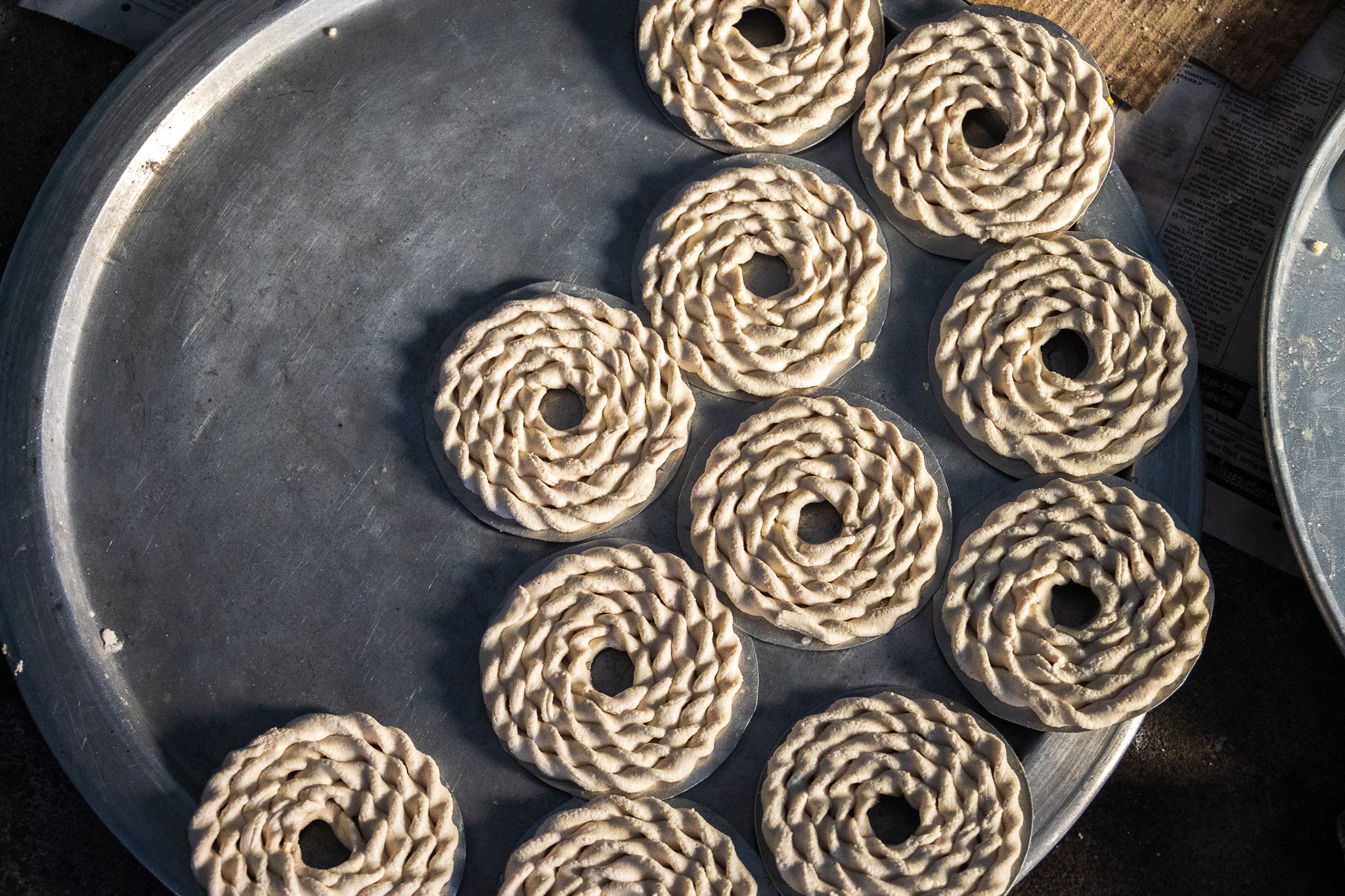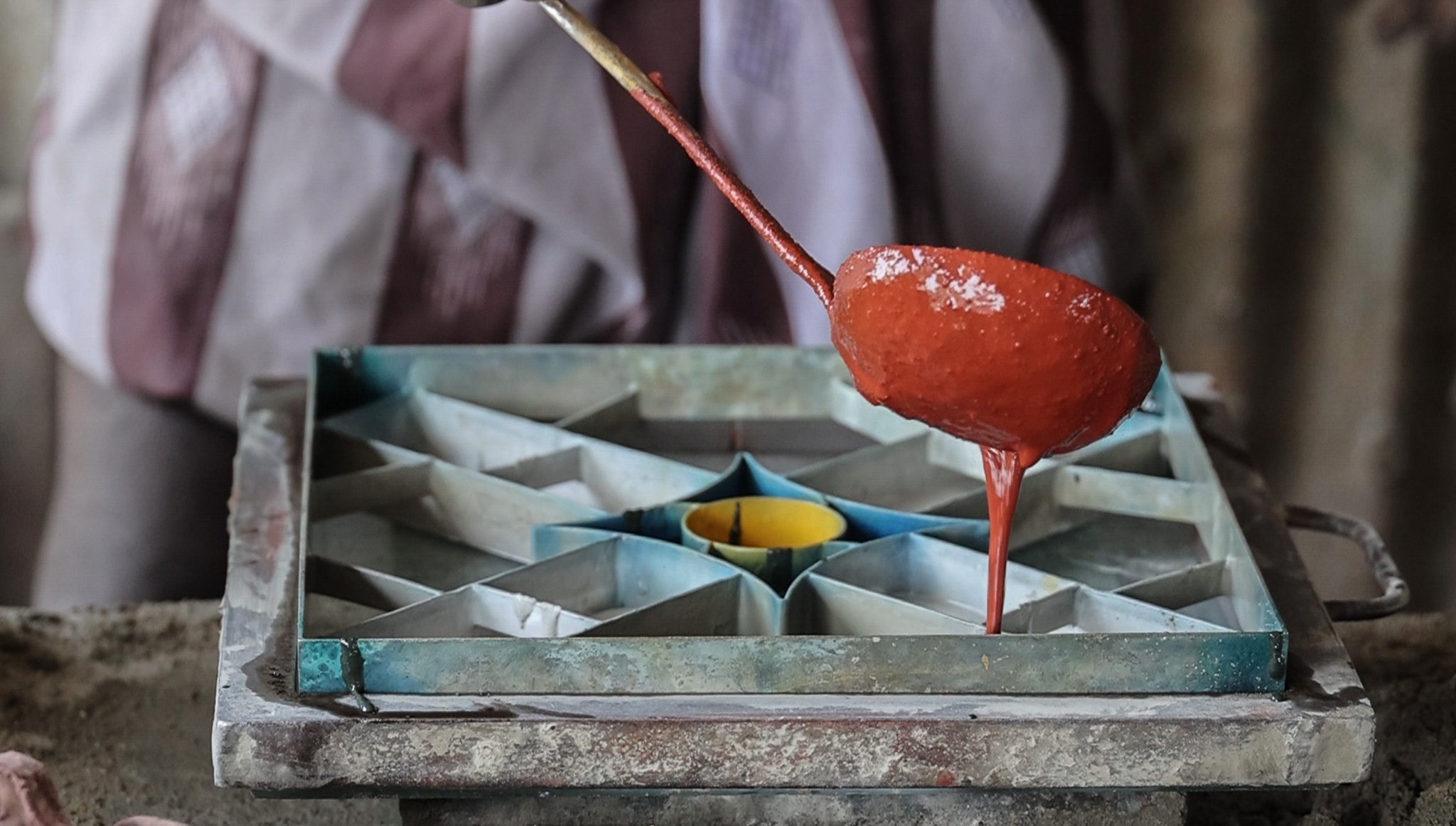Continuing in his letter to the Montreal Star on March 2, 1901, Karl wrote: “A few miles further on I came to a small village with a puncture in the tire of the front wheel of my machine, having run over some thorns, which made a hole so small that it could not be found without placing the tube in water. I hoped to be able to get water from the locals of the village, and seeing half a dozen of them sitting by the roadside, I approached and said “Parnie Mungta” ( I want water). These four or five locals happened to be eating their dinner of rice and curry, at the time, and before I thought what I was about. I walked up close enough for my shadow to fall on their food. They immediately set off a howl of rage (as a local of India breaks his caste if he eats food, after the shadow of a European has fallen on it), and began to look for a few rocks to hurl at me. They cursed and swore away in their own language and something dreadful. All I could catch was “Mulinne Soor” (heathen swine) but, by the way, they were going on, I think they must have said something worse than “swine”. I did not wait to see what they were saying, but at once jumped on my wheel, punctured as it was, and rode away, until I was at a safe distance. Then dismounting, I walked into the next village, my wheel by my side, some six miles farther on, and here got a “chattie” (brass basin of water) , found the hold in my tire, repaired it, then rode away again.”
I'm delighted to share with you, dear reader, that my travels throughout India were devoid of any encounters that resulted in being labelled a "Mulinne Soor" or worse! On the contrary, the highlights of my journey unfolded in the local villages.
Staying true to Karl's experiences 120 years ago, my travel objective centred around seeking opportunities to witness local artisans preserving traditional methods. In a world dominated by disposable consumerism and mass-produced goods, I am drawn to the authenticity of handcrafted items. These creations echo the same processes passed down through generations, forming a tangible link to history, ancestors, and the fundamental elements that define a culture.
During my Indian travels, three authentic experiences stood out, shaping the narrative of my journey. These included observing and actively participating in making murukku savoury snacks, learning the intricate art of Athangudi tiles, and discovering the age-old craft of transforming coconut husks into rope. Join me, dear reader, as we step back in time through these photos, capturing the pride of some skilled artisans in local villages.
Murukku, derived from the traditional Tamil word meaning "twisted," is a delectable fried savoury spiral snack crafted from a blend of flour and spices, celebrated throughout South India. In my exploration, I had the privilege of visiting a village in Kanadukathan, where the heart of this culinary art unfolded in a local shop.
Stepping into the shop, the scene was bustling with activity. A group of women occupied various stations, each assigned specific tasks. Some deftly squeezed the dough into disks, releasing them directly into bubbling oil, while others, with nimble fingers, transformed the dough into intricate circular twists. The atmosphere mirrored a home kitchen, with each team member seamlessly executing their roles. Eager to engage and learn, I offered my hands in assistance, a gesture that highlighted my own culinary ineptitude and underscored the skill exhibited by these ladies.
Getting to work, I obviously need some more practice!
Aathangudi, located approximately 10 kilometers from Visalam, boasts renowned small-scale factories specializing in entirely handmade tile production. These distinctive tiles, known as Chettinad tiles, Athangudi tiles, or Karaikudi tiles, have adorned the homes of the Chettiars for over a century. The Chettiars, merchants and traders of significant wealth, installed these tiles in their opulent mansions.
Wandering through the village, I observed the intricate process of tile making, where many families are dedicated to this craft. The artistry involved in creating each tile by hand is a testament to the cultural heritage woven into the very fabric of the Chettinad region.
Inspired by my previous experience making Murukku, I decided to try tile making. It was a humbling yet satisfying endeavour, while gaining an appreciation of the craftsmanship embedded in each tile that has adorned Chettinad homes for generations.
Clearly better at making tiles than snacks!
Kerala, rightfully dubbed the "Land of Coconut Trees," derives its name from the harmonious blend of "Kera," representing coconut tree, and "Alam," denoting land. Far more than a mere fruit, the coconut holds profound symbolism, embodying the beauty and abundance of Kerala. In the idyllic backwaters of this region, the coconut tree transcends its botanical identity, becoming a crucial economic lifeline for the rural populace.
Regarded as the "kalpavriksha" or the tree of blessings, every facet of the coconut tree finds purpose and utility. During my exploration, I witnessed a traditional method, although no longer prevalent, wherein dried coconut husks were meticulously processed to craft coir, a natural rope. This age-old practice resonates with the historical significance of coir, which has been utilized for centuries to bind ship planks and secure sails to masts. The transformation from husk to rope exemplifies the enduring traditions that connect Kerala's past to its present, showcasing the resourcefulness of the coconut tree beyond its culinary contributions.
So while I had the easier part of this process, it was amazing to see the coconut husk transformed.
And while I delved into the time-honoured techniques of crafting murukku, tiles, and rope, Karl, in parallel, pedalled steadily westward on his journey to Bombay (now Mumbai). As he navigated the vast landscapes, I decided to take a detour to the Pink City, a quintessential destination for any traveller in India, even if it wasn't on Karl's route. Sometimes, the allure of unexpected sidetracks unveils hidden gems. Join me next week as we explore the vibrant city of Jaipur.
If you are new to the Karl Chronicles, get caught up on our expedition around the world! Start here with: 100 highlights from 100 Chronicles
Then get caught up on the rest of our journey, click here for more Karl Chronicles
The Karl Journey is registered as an official expedition with the Royal Geographical Society


















